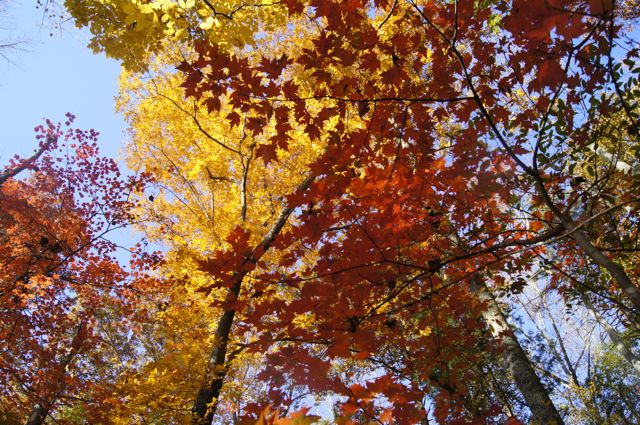In case you haven’t seen the forecast for this weekend, fall finally arrives. After summer’s last stand (hopefully), we’re looking at daytime temperatures in the 70s in the Piedmont, in the 60s in the mountains, ideal for finally getting out and enjoying some fall hiking.
Where? you inquire.
Here are 10 spots where we think you should head based on two things:
- The temperature. Hike in the mountains and you could be starting out in temperatures in the 40s!
- Fall color. Hike in the mountains, and high enough in the mountains (above 5,500 feet), and you could see the start of some pretty good color.
Based on those two criteria, most of our recommendations are all in the mountains. Enjoy!
North Carolina
1. Black Mountain Crest Trail

Mount Mitchell State Park
North Carolina
Might as well start at the top, atop 6,684-foot Mount Mitchell, the highest point on the East Coast. Anchoring the north end of the Black Mountain Crest Trail, you can start from the state park’s snackateria and hit several peaks above 6,000 feet and see a good color show consisting of fire cherry, yellow birch, mountain ash and mountain maple. Note: the Crest rail is technically challenging, with mild scrambling in spots. Fortunately, the best view is from the nearest peak: Mount Craig.
More info here.
2. Tanawha Trail / Mountains-to-Sea Trail
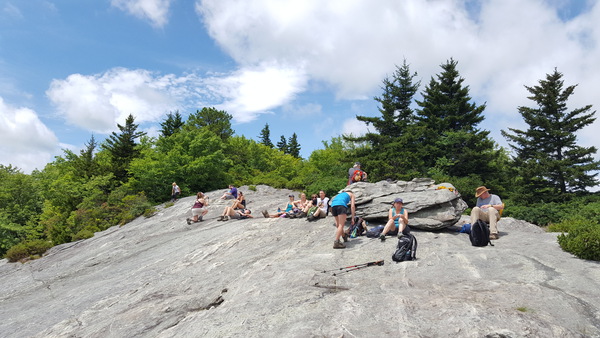
Blue Ridge Parkway
North Carolina
The 13-mile Tanawha at the base of Grandfather Mountain is best known for its rocky southern half. But put in at Boone Fork and head north and you’ll spend time initially in a mature hardwood forest, later in small rolling meadows that offer intimate exposure to the Blue Ridge’s less aggressive side. You’ll also find more potential for early color on the northern end. Additional advantage: paralleling the Blue Ridge Parkway as it does, you’ll find it super easy to set shuttles — along the 13.5-mile length of the trail there are 11 access points.
More info here.
3. Linville Gorge
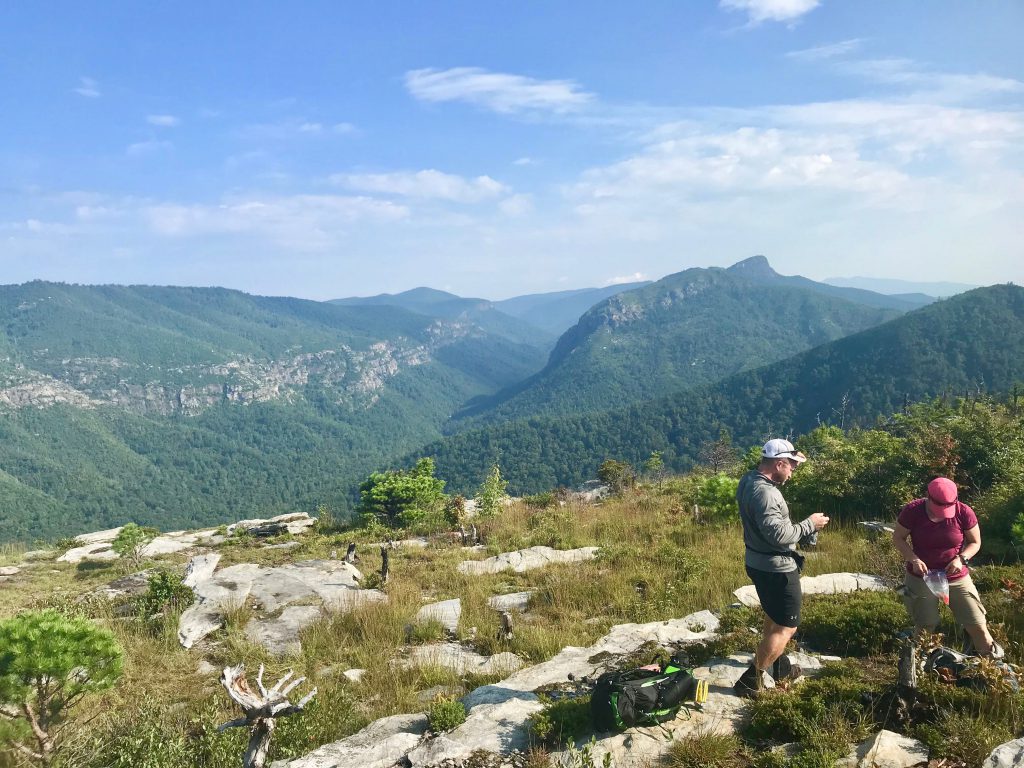
Pisgah National Forest
North Carolina
One of our favorite hikes in the state, the 2.2-mile trail up to Shortoff Mountain from the end of Wolf Pit Road is a good climb, but pays off in three miles of trail with repeated outcrop views up the gorge, down into the gorge and beyond, to Lake James. On a clear, crisp fall day you may not experience better color. In spots, the gorge rises 1,300 feet above the Linville River (which drops 2,000 vertical feet from the north end to the south), offering one of the most awe-inspiring views in the state. If you’re comfortable hiking in the dark (back to your car) and driving a windy forest service road in the dark, plan to be on Shortoff around sundown for one of the best sunsets around.
More info here.
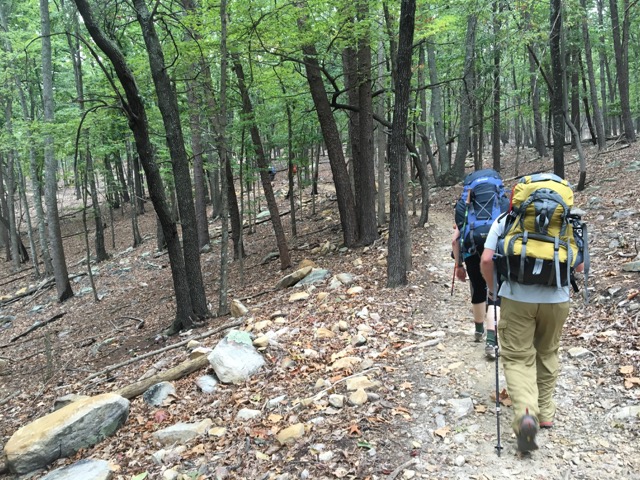
4. Mountain Trail
Pilot Mountain State Park
North Carolina
Pilot Mountain, with its distinctive knob towering 1,400 feet above the surrounding countryside, is a hot spot when autumn’s colors heat up. Avoid the resulting crowds by picking up the 4.5-mile Mountain Trail from the little-used Corridor Access. The connecting Grindstone Trail takes you to the top, for great views. Another option for avoiding fall crowds: take the new 3.3-mile Pilot Creek Trail, which starts low on the north side of the park and connects with the Mountain and Grindstone trails for a trip to the summit.
More info here.
4. Uwharrie Trail: Sections 3 & 4
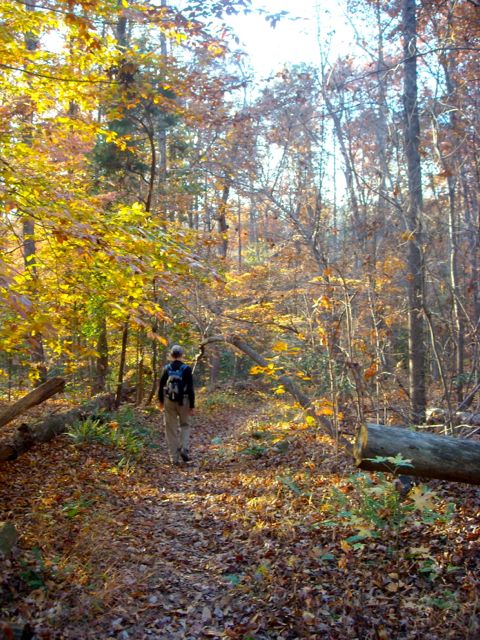
Uwharrie National Forest
North Carolina
So maybe you live in the Piedmont and don’t have time to visit the mountains but still want a mountain-like experience: you need to pay a visit to North Carolina’s under-appreciated mountain range, the Uwharries. Located within an hour and a half of Charlotte, the Triad and the Triangle, the Uwharries offer peaks reaching 1,000 feet (hey, it’s the Piedmont!) and one awesome view, which you can reach from the Jumpin’ Off Rock trailhead. Take the Uwharrie Trail north following a creek for a ways, then climbing Little Long Mountain for the best view in the Uwharries. Continuing north, it tops out on 1,020-foot King Mountain, the highest point on the Uwharrie Trail. Lots of good fall hardwoods along the way.
More info here.
5. Summit Trail
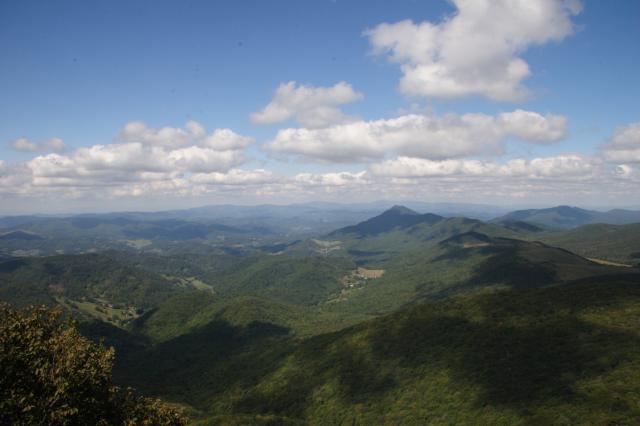
Elk Knob State Park
Todd
Elk Knob is the perfect early season fall destination. At 5,520 feet, it offers unsurpassed views (nearly 360 degrees), but it’s the view to the north that’s especially captivating in fall. We’ll let the park website explain why: “Elk Knob contains an excellent example of a northern hardwood forest … typically found above 4,000 feet in elevation [are] sugar maple, yellow birch, American beech, and yellow buckeye.” That is, the trees that give forests in New England their vaunted glow. In addition, from atop Elk Knob you can see Three Top and Bluff mountains, Mount Jefferson, Grandfather Mountain, Mount Mitchell, Mt. Rogers in Virginia and the Iron Mountains in Virginia and Tennessee. And it’s not just the summit: the 1.9-mile hike to the top is one one of the most well-crafted trails around.
More info here.
6. Moore’s Wall Loop Trail

Hanging Rock State Park
Danbury
Mountain-top 360-degree views are few in the Piedmont. At Hanging Rock, you have two. Hanging Rock proper is just 1.3 miles from the Visitor Center, making it a popular choice for the masses who descend on fall weekends. Less popular is the 4.7-mile Moore’s Wall Loop, which, regardless of whether you hike it clockwise (our choice) or counter, requires payment in leg labor for the resulting views. Ah, but what views they are: to the west (Blue Ridge) and north (Virginia’s George Washington National Forest) you can watch the color cascading your way. Or, hiked in late October into November, look south and east to see the Piedmont light up in the distance.
More info here.
Virginia
1. Hawksbill Mountain
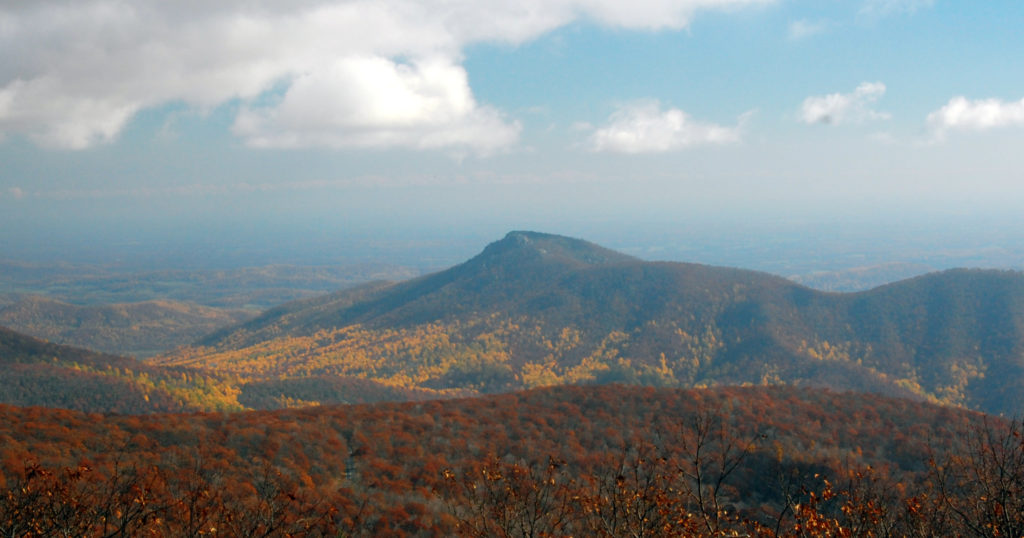
Shenandoah National Park
Virginia
At 4,050 feet, Hawksbill is the highest point in the Shenandoah National Park, and thus, presumably, the first place to spot fall color. Take the steep 1.7-mile out-and-back or the 2.9-mile loop trail, from MP 45.6 on Skyline Drive. Connect to the Appalachian Trail to extend your hiking time. The hike is a favorite of our GetHiking! Charlottesville group.
More info here.
2. Rock Castle Gorge
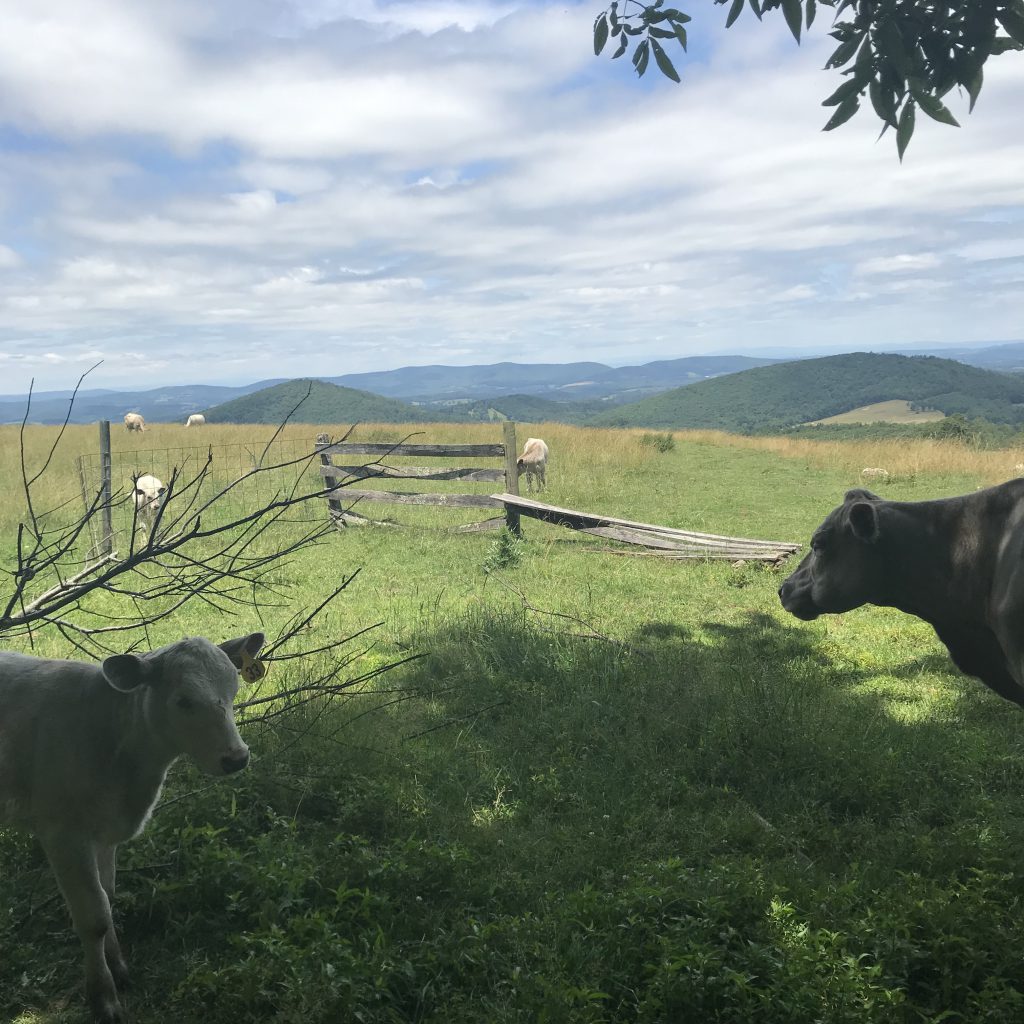
Blue Ridge Parkway
Virginia
A hidden favorite that’s surprisingly close to the Triad area. Start from the base, at the VA 605 access and get your climbing out of the way early, with a 3-mile hike up the Blue Ridge Escarpment to the Blue Ridge Parkway. Here, follow the trail south for 3.5 miles through mountain meadows (the cows are friendly), until a rocky 1.5-mile descent back into the gorge. Your last 2.8 miles is a steady descent on old roadbed along Rock Castle Creek. A 10.8-mile with enough distractions to keep your mind off the fact the elevation on this hike ranges from 1,700 to nearly 3,600 feet. Along the way you’ll pass through rhododendron hells, along a frisky mountain stream, past long-abandoned buildings.
More info here.
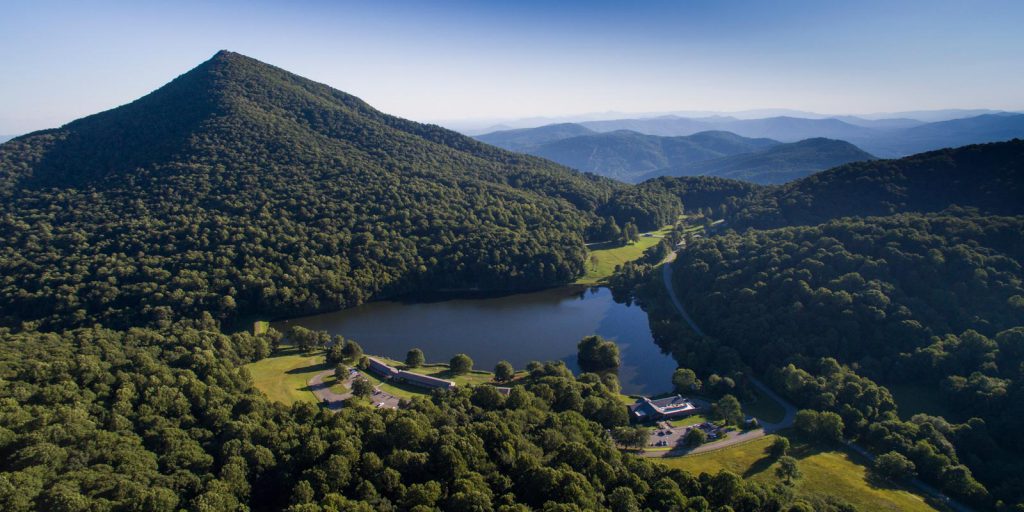
3. Peaks of Otter
Blue Ridge Parkway
Virginia
It gets a little crowded, though the challenging terrain thins the crowds on certain trails. In fact, that’s one of the advantages here. Got a mix of hikers in your group? The die-hards head one way, the strollers another. The latter will also appreciate the civilities here: the visitor center, the lodge, the restrooms.
More info here.
4. Mount Rogers
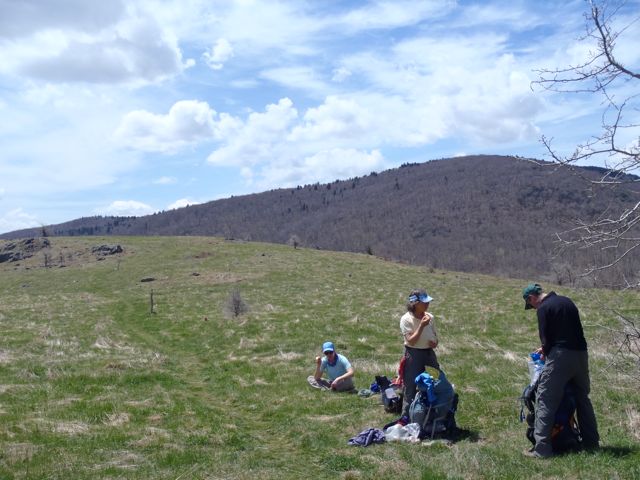
Mount Rogers National Recreation Area
Virginia
Mount Rogers and the adjoining Grayson Highlands State Park offer a trip out West in southwest Virginia. Rock outcrops and vast open spaces offer the type of wide-open experience folks head to the Rockies for. The only place you won’t find a view? Atop Mount Rogers, at 5,729 feet the highest point in Virginia.
More info here.
